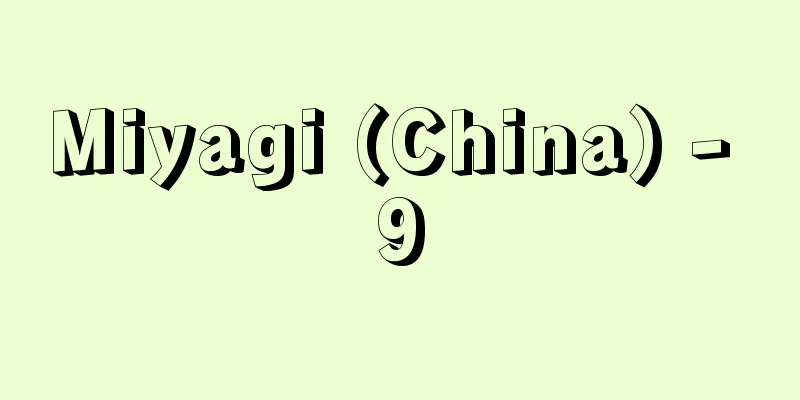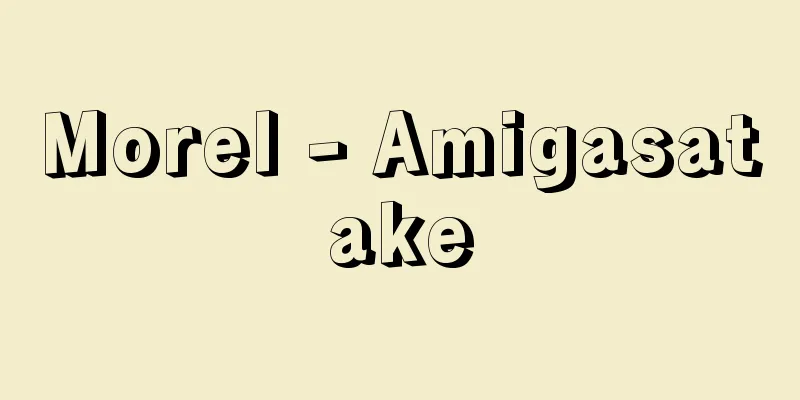PR - PR

|
Public relations is an abbreviation for "public relations." In Japan, it is also used as a synonym for advertising, public relations, and publicity, but the concept is broad. What they all have in common is that they are based on a relationship with public opinion. [Shigeo Ogura] conceptThe word "public" originally meant a common social problem, or the public, and the group that shows an interest in and discusses it, but today, even in Europe and the United States, it is used in everyday life to mean simply a group, without distinction from the mass. Relations refers to the various relationships between people, and includes the process of contradictions, conflicts, and balance in human relationships. (1) Definition from the perspective of human relations: "It is the building of relationships (within and between publics) between people who freely discuss and listen to each other on issues of common social concern, and through that process, to create a basis for the better development, improvement, and resolution of pending problems." When PR is applied to the actual activities of an organization, it is also framed according to the characteristics of the organization and the way in which appropriate division of roles is determined. Important functions that are common to companies and other organizations include: [Shigeo Ogura] historyThe concept of PR and its activities were born and developed in the United States. There is a myth that the word originated in a Congressional speech by the third president, Jefferson. The term PR was first used at the end of the 19th century, but it meant the provision of news materials to the press, i.e. publicity, and the company that provides such information, i.e. a press agency. Parker, Lee, Inc., founded in 1904 by Ivy Lee, who is considered the "father of PR," was a press agency. The term PR began to appear in the 1910s, but it did not become widespread until the 1920s. During World War I, President Wilson established the "Committee on Public Information" to persuade the American people of the significance of entering the war. One of its staff members, Edward Bernays, coined the term "public relations counsel" in 1922. Since the Great Depression that began in 1929, public opinion attacked the social irresponsibility of the industrial sector, and against this backdrop, President Roosevelt, who took office in 1933, intervened in the industrial sector with his New Deal policies, which gave entrepreneurs a strong sense of crisis about the free enterprise system, and PR activities to respond to public opinion were positioned as a high-ranking function on a par with human resources, manufacturing, sales, etc. PR counseling work also became more active. In Japan, PR was known among some researchers, diplomats, and others before World War II, but it became widespread several years after the war when GHQ (Supreme Commander for the Allied Powers) forced government agencies to introduce the activity as part of its policy to democratize Japan. In the private sector, the concept was introduced by the Japan Telegraph Communication Company (now Dentsu) in 1949 (Showa 24). However, the concept of PR gradually shifted to communication terms such as public relations, advertising, publicity, and so on. As a result, confusion between the concepts of PR and public relations continued. Public opinion surveys and other public relations activities were also carried out from an early stage, but it was not until the end of the 1960s that its importance became widely recognized. [Shigeo Ogura] Development of PR activitiesAfter World War II, the United States took a leading role among capitalist countries, and PR activities, along with marketing activities, contributed greatly to the realization of a society of mass production, mass distribution, and mass consumption. Stable, long-term growth as a corporate management objective was also emphasized, and in the industrial sector, various PR methods, such as publicity, mass media advertising, PR magazines, PR films, posters, and other information provision activities that are considered public relations activities in Japan, were deployed to publicize management activities that take into consideration the interests of the public (public interest = public interest). Public hearings were also actively conducted to learn about various public opinions in society, including consumers and local residents. Organizations and departments for PR activities were also strengthened and expanded. Lobbying Congress was also legally guaranteed as a right to petition under the Constitution. However, in the process leading up to the passage of the 1966 Automobile Safety Act in the United States, the foolish actions of General Motors (GM) in an attempt to oust attorney Ralph Nader, the citizen advocate for the bill, in order to prevent the bill from passing, were exposed, and social criticism of the actual PR activities intensified. In particular, from the mid-1960s, citizen activities criticizing the Vietnam War became more active, and many companies involved in military production, including Dow Chemical, which manufactured napalm bombs, were targeted. In response, PR activities by the industrial sector calling for cooperation with the country's war aims were largely ineffective until the end of the Vietnam War. In Japan, PR activities became more active with the start of the high economic growth in the 1960s. In 1962 (Showa 37), campaigns such as the "Sherbet Campaign" were already being carried out, which covered different industries such as textiles and cosmetics, and integrated information transmission such as advertising and publicity. At the 1964 Tokyo Olympics, companies from various industries, including Hattori Watch Shop (later Seiko), which was in charge of the watches for the competition, participated in the "national event," and developed PR activities based on this. However, pollution became apparent in the late 1960s, and there was the defective car incident in 1969, the double-pricing incident for color televisions in 1970, and the problem of hyperinflation during the oil crisis in 1973. The industrial sector was severely criticized for its social responsibility due to environmental and consumer issues, and PR activities were forced to face new situations. In international relations, friction between Japan and the US over the export of one-dollar blouses in the late 1950s, and from the late 1960s to the early 1970s over the dumping of Japanese steel, textiles, and color televisions led to Japan's passive PR activities becoming an issue. From the late 1970s to the 1980s, friction between Japan and the US and between Japan and Europe arose over trade imbalances in general, including automobiles and electronics, and furthermore, as Japanese companies began to operate overseas, such as setting up plants, new PR activities began to be implemented in relation to local employees. In the United States, social rifts became serious from the late 1960s to the 1970s due to the Vietnam War, human rights issues, consumer issues, environmental destruction, and resource issues, but the PR activities of the industry were unable to respond to these. In addition, PR activities were negatively perceived as "dirty activities" such as manipulating public opinion, and the term public affairs (PA), which had already appeared in the late 1950s, quickly became popular as a term more applicable to public and social issues than PR. PA activities are activities aimed at defending and developing the free enterprise system, and trying to gain the understanding and favor of the people. At the core of these activities is political activity that leverages public opinion to restructure laws (drafts) and administrative policies (drafts) in favor of the industry, and lobbying Congress and the government based on that. In particular, the stagnation of the American economy and the decline of its international status from around the time of the 1973 oil crisis through the 1980s strengthened the sense of crisis in the industry and intensified PA activities. However, this activity has also been strongly criticized by liberal experts and civic groups as prioritizing business interests over the national interest of the United States as a whole. [Shigeo Ogura] Direction of PR activitiesIssues such as the environment, resources and energy, economic order, and North-South relations have inevitably brought international challenges to Japan's PR activities. Trade friction has also made the cultural friction behind it an issue. Not only in the United States, but also in Europe and developing countries, PR activities are active as domestic and international issues, and from the perspective of "Spaceship Earth," PR activities that promote international mutual understanding are becoming increasingly important. In addition, since PR activities have a great influence on domestic and international relations, the role of the government and industry is extremely important, but PR activities are by no means the monopoly of the government or industry. PR activities are already evident in the form of children publishing school newspapers and local newspapers and raising traffic safety issues. The subject-object relationship in PR between governments, companies, local residents, consumers, etc. is not necessarily a fixed relationship. When local groups or consumer groups raise issues to the government, local government, or companies, the former is the subject of PR and the latter is the object. In order for this subject-object relationship to become more equal, it is necessary to expand the function of freedom of expression by establishing a media access system that allows general citizen groups to freely use mass media and other PR methods financially and technically, and, as a prerequisite for expression, to establish an information access system that allows citizens to actively obtain social and public government and industry information, in other words, an information disclosure system for governments, local governments, companies, etc. In modern PR activities, the importance of (1) truthfulness, (2) conformity with the public interest, (3) two-way communication, and (4) human contact communication activities is pointed out. This issue is an ideal form of freedom of speech and equality, and to approach this ideal, democratic management and operation of various communication systems in society, including politics, administration, and industry, must be a prerequisite. [Shigeo Ogura] "The History of PR Activities in Japan," edited by the Japan Public Relations Council (1980, Japan Federation of Employers' Associations) " ▽ "Corporate Public Relations Strategy, by R.T. Riley, supervised translation by Takebe Eiichi (1983, Diamond Inc.)" ▽ "Thinking about PR, by Ogura Shigeo, revised edition (1983, Dentsu)" ▽ "Communicating PR, by Ogura Shigeo and Seki Hiromichi (1995, Dentsu)" [References] | | | | | |Source: Shogakukan Encyclopedia Nipponica About Encyclopedia Nipponica Information | Legend |
|
パブリック・リレーションズpublic relationsの略。日本では、宣伝、広告、広報、パブリシティーなどの類似語としても用いられているが、その概念は幅広い。共通していることは、世論public opinionとの関係が基本にあることである。 [小倉重男] 概念パブリックとは、元来は共通の社会的問題=公共と、これに関心を示し議論しあう集団=公衆を意味するが、今日では欧米でも大衆massと区別なく単なる集団の意味で日常用いられている。リレーションズとは、人間の多様な関係であるが、そこには人間関係の場における矛盾、対立、均衡などの過程が内包されている。 (1)人間関係の観点からの定義 「共通の社会的関心事について自由に語り合い、聞き合う人々の間(公衆内、公衆間)の関係づくりであり、その過程を通して懸案の問題をよりよく発展させたり、改善、解決したりするための基盤をつくりあげることである」 PRは組織の実際活動に適用されるとき、組織の性格やこれに適した職能分担の決め方によって枠づけもされる。企業などの組織により多く共通する重要な職能には、 [小倉重男] 歴史PRの概念や実際活動はアメリカで生成・発展した。そのことばの起源を第3代大統領ジェファソンの議会演説に求める神話もある。19世紀末にPRということばが初めて使われているが、その内容は報道機関へのニュース素材の提供=パブリシティーやその業者=プレス・エージェンシーを意味していた。「PRの父」とされているアイビー・リーIvy Leeが1904年に設立したパーカー・リー社はプレス・エージェンシーであった。1910年代にPRということばが散見されだすが、一般に普及したのは1920年代である。第一次世界大戦中、アメリカの国民に参戦の意義を説くため、ウィルソン大統領は「パブリック・インフォメーション委員会」を設けたが、そのスタッフの一人エドワード・バーネイスEdward Bernaysは、1922年「PRカウンセル(弁護士、顧問)」ということばをつくっている。1929年に始まった大恐慌以来、産業界の社会的無責任を攻撃する世論と、これを背景に1933年就任したルーズベルト大統領のニューディール政策による産業界に対する政治介入は、企業家たちに自由企業制度への強い危機感をもたらし、世論に対応するPR活動を人事、製造、販売などと並ぶ高い機能として位置づけた。PRカウンセル業務も活発化した。 日本では、第二次世界大戦前から研究者、外交官などの一部でPRは知られていたが、これが普及したのは、戦後数年間、GHQ(連合国最高司令部)が日本民主化政策の一環として行政機関にこの活動を導入させたのが契機である。民間では1949年(昭和24)に日本電報通信社(現電通)がその概念を紹介している。しかし、PRの概念はしだいに広報、広告、宣伝、パブリシティーなどのコミュニケーション語に移っていった。したがってPRと広報概念の混同が続いた。広聴活動も世論調査などを通じて早くから行われていたが、その重要性が広く認識されるようになったのは1960年代末ごろからであった。 [小倉重男] PR活動の発展第二次世界大戦後、資本主義諸国の指導的立場にたったアメリカでは、大量生産、大量流通、大量消費社会の実現のため、PR活動がマーケティング活動とともに大きく寄与した。安定的、長期的成長という企業の経営目的も強調され、産業界では諸公衆の利益(公共利益=パブリック・インタレスツ)を配慮するという経営活動の周知のためにも、PRの諸手段、すなわちパブリシティー、マスコミ広告、PR誌、PR映画、ポスターをはじめ、日本で広報活動とされている情報提供活動が展開された。また消費者、地域住民など社会の各種世論を知るための広聴活動も活発に行われた。PR活動のための組織、部門も強化・拡大された。憲法における請願の権利として議会に対するロビイングも法的に保障された。 しかし、アメリカでは1966年の自動車安全法成立に至る過程で、同法案の不成立をねらい、この法案の市民側の推進リーダー、ラルフ・ネーダー弁護士を失脚させようとしたゼネラル・モーターズ(GM)の愚行が暴露されるなど、PR活動の実際に対する社会的批判も強まった。とくに1960年代なかばからはベトナム戦争批判の市民活動が活発化し、ナパーム弾を製造していたダウ・ケミカルをはじめ、軍需生産を抱える多くの企業が標的となった。これに対して、国の戦争目的への協力を呼びかける産業界のPR活動は、ベトナム戦争終了までほとんど効果を収めることはできなかった。 日本では、PR活動は1960年代の高度経済成長への出発とともに活発化した。1962年(昭和37)には、「シャーベット・キャンペーン」のように繊維、化粧品など異業種を網羅し、広告やパブリシティーなど情報伝達を総合化するキャンペーンがすでに行われている。1964年の東京オリンピックは、競技時計担当の服部(はっとり)時計店(のちセイコー)はじめ、多様な業種の企業が「国民的行事」に参与し、これを基にしてPR活動を展開した。しかし、1960年代後半には公害が顕在化し、1969年には欠陥自動車事件、1970年にはカラーテレビの二重価格事件、1973年の石油危機の際は狂乱物価問題が発生、環境・消費者問題などで産業界は社会的責任を厳しく追及され、PR活動は新たな事態に直面せざるをえなくなった。国際関係では、1950年代後半に1ドル・ブラウスの日本からの輸出をめぐる日米摩擦、1960年代後半から1970年代前半は日本からの鉄鋼、繊維、あるいはカラーテレビのダンピング問題をめぐる日米摩擦で日本のPR活動の消極性が問題になった。1970年代末から1980年代には、自動車、エレクトロニクスをはじめ、貿易全般の不均衡問題で日米・日欧摩擦が出現、さらに、プラント進出などわが国企業の海外活動に伴い、現地での従業員関係などでも海外PR活動の新対応が始まった。 アメリカでは、1960年代後半から1970年代にかけて、ベトナム戦争、人権問題、消費者問題、環境破壊、資源問題などで社会的亀裂(きれつ)が深刻化したが、これに産業界のPR活動が対応できなかった。また、PR活動が世論操作など「汚れた活動」としてイメージ・ダウンしたこともあり、1950年代末にすでに登場していたパブリック・アフェアーズpublic affairs(PA)ということばがPRよりも公的、社会的課題に適応するものとして急速に普及した。PA活動とは、自由企業体制の擁護、発展を目的とし、国民から理解と好意を得ようとする活動である。その中心は法律(案)や行政施策(案)を産業界に有利に組み直すために世論を味方にし、それを基に議会や政府に働きかける政治活動である。とくに1973年の石油危機の前後からさらに1980年代にかけてのアメリカ経済の停滞と国際的な地位の低落は、産業界の危機意識を強め、PA活動を活発にしてきた。しかしこの活動は、アメリカ全体の国益よりも産業界優先の活動であるとして、リベラルな有識者や市民団体からの批判も強い。 [小倉重男] PR活動の方向環境、資源・エネルギー、経済秩序、南北関係などの問題は、日本のPR活動にいやおうなく国際的な課題をもたらした。貿易摩擦は、その背景にある文化摩擦をも問題にした。アメリカばかりでなく、ヨーロッパ、さらに開発途上国においても、国内問題=国際問題としてのPR活動は活発であり、「宇宙船地球号」の観点からも国際的な相互理解を進めるPR活動がいよいよ重視されてくる。また、PR活動では国内・国際関係に対する影響力が大きいことから、政府、産業界の役割がきわめてたいせつであるが、PR活動はけっして政府や産業界の独占活動ではない。子供たちが学校新聞や地域新聞を発行し、交通安全問題を提起しあう形態にPR活動はすでに表れている。政府、企業と地域住民、消費者などとの間のPRの主体・客体(対象)関係もかならずしも固定的な関係ではない。地域団体や消費者団体などが政府や自治体や企業に対して問題提起を行う際は、PRの主体は前者、客体は後者となる。 この主体・客体関係がより同格になるためには、マス・メディアをはじめPR手段について金銭的、技術的に一般市民団体が自由に使いうるメディア・アクセス制度の確立による表現の自由の機能の拡大、さらに表現の前提条件として、社会的、公的な政府や産業の情報を市民側が積極的に入手できるような情報アクセス制度、すなわち政府や自治体、企業などの情報公開制度の確立が必要となってくる。現代のPR活動では、(1)真実性、(2)公共利益合致、(3)双方向性、(4)人間的接触のコミュニケーション活動の重要性などが指摘されている。この課題は、言論の自由、平等の理念的形態であり、この理想に近づくためには、政治、行政、産業をはじめ社会の諸コミュニケーション制度の民主的な管理・運営が前提でなければならない。 [小倉重男] 『日本PR懇談会編『わが国PR活動の歩み』(1980・日本経営者団体連盟)』▽『R・T・ライリー著、建部英一監訳『企業広報戦略』(1983・ダイヤモンド社)』▽『小倉重男著『PRを考える』改訂版(1983・電通)』▽『小倉重男・瀬木博道著『コミュニケーションするPR』(1995・電通)』 [参照項目] | | | | | | | | |出典 小学館 日本大百科全書(ニッポニカ)日本大百科全書(ニッポニカ)について 情報 | 凡例 |
<<: Nasal allergy - bia-ru-gi (English spelling)
>>: Biarritz (English spelling)
Recommend
"Film, the Illusion of My Freedom" - "Film, the Illusion of My Freedom"
...After that, he continued to make unique and po...
Tetraplodon mnioides (Hedw.) BSG
A moss with a unique ecology in the family Plommat...
Julius August Philipp Spitta
1841‐94 German musicologist. After studying theolo...
The Battle of Ezhou
…In the Sui dynasty, it was Jiangxia County, in t...
Working conditions
It refers to all the conditions under which a wor...
Golden-eyed Penguin
The remaining nine species live in cold waters, m...
Li Anzhong
Dates of birth and death unknown. A Chinese paint...
Antonov-Ovseenko, VA (English spelling) AntonovOvseenkoVA
…The peasant “People’s Army” reached 20,000-40,00...
Verdinglichung
...One of the basic conceptual devices in K. Marx...
Dental plaque
Dental plaque is a soft, milky white organic subs...
Battle of Bouvines - Battle of Bouvines
In 1214, King Philip II of France defeated the com...
Calvinism - Calvinism
Protestantism is a philosophy that developed from...
Pungitius sinensis (English spelling) Pungitiussinensis
…[Isao Hanyu]. … *Some of the terms mentioned in ...
Adrastos
A hero of Greek mythology, known as the commander ...
Measurement Law - Keiryohhou
This law stipulates the matters necessary to ensu...









